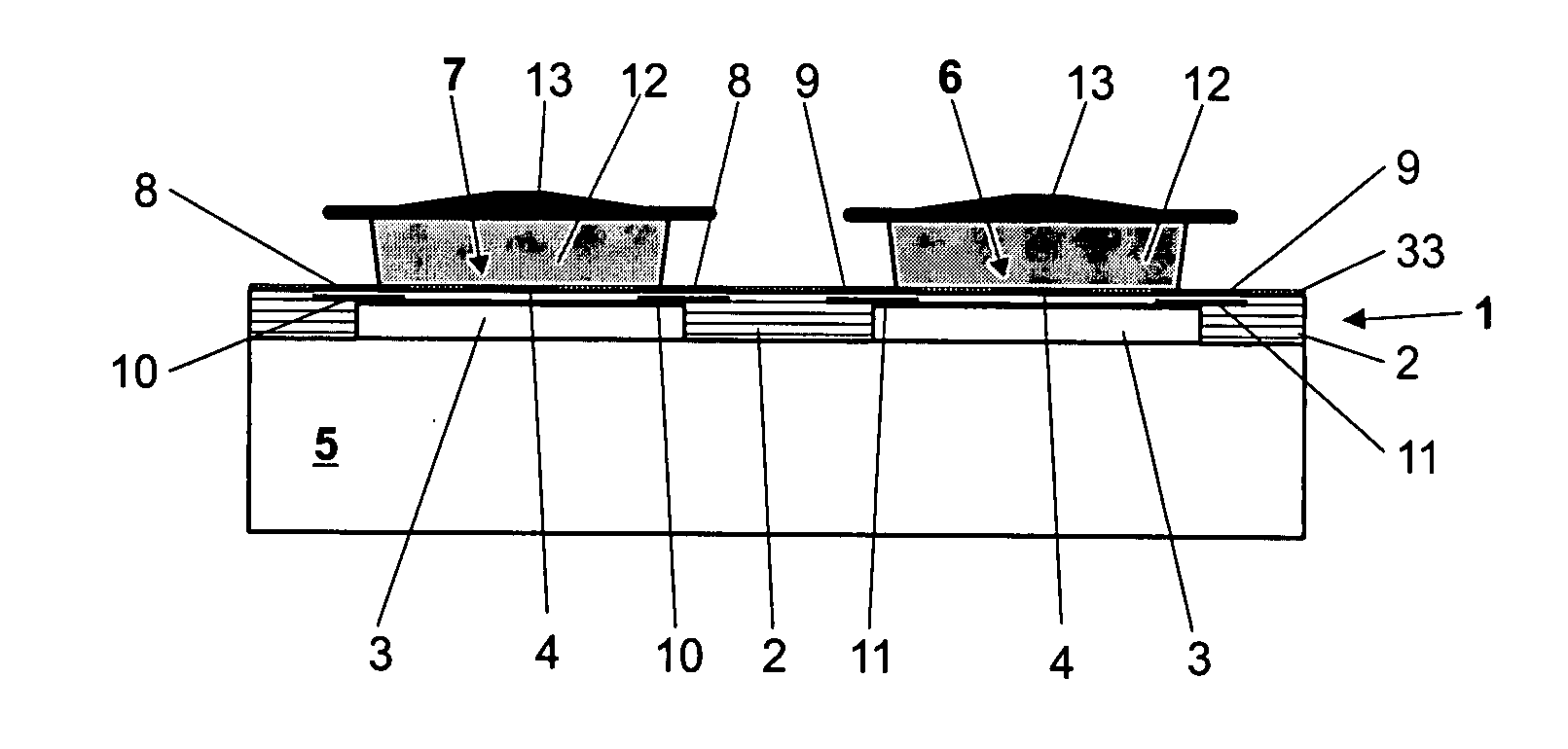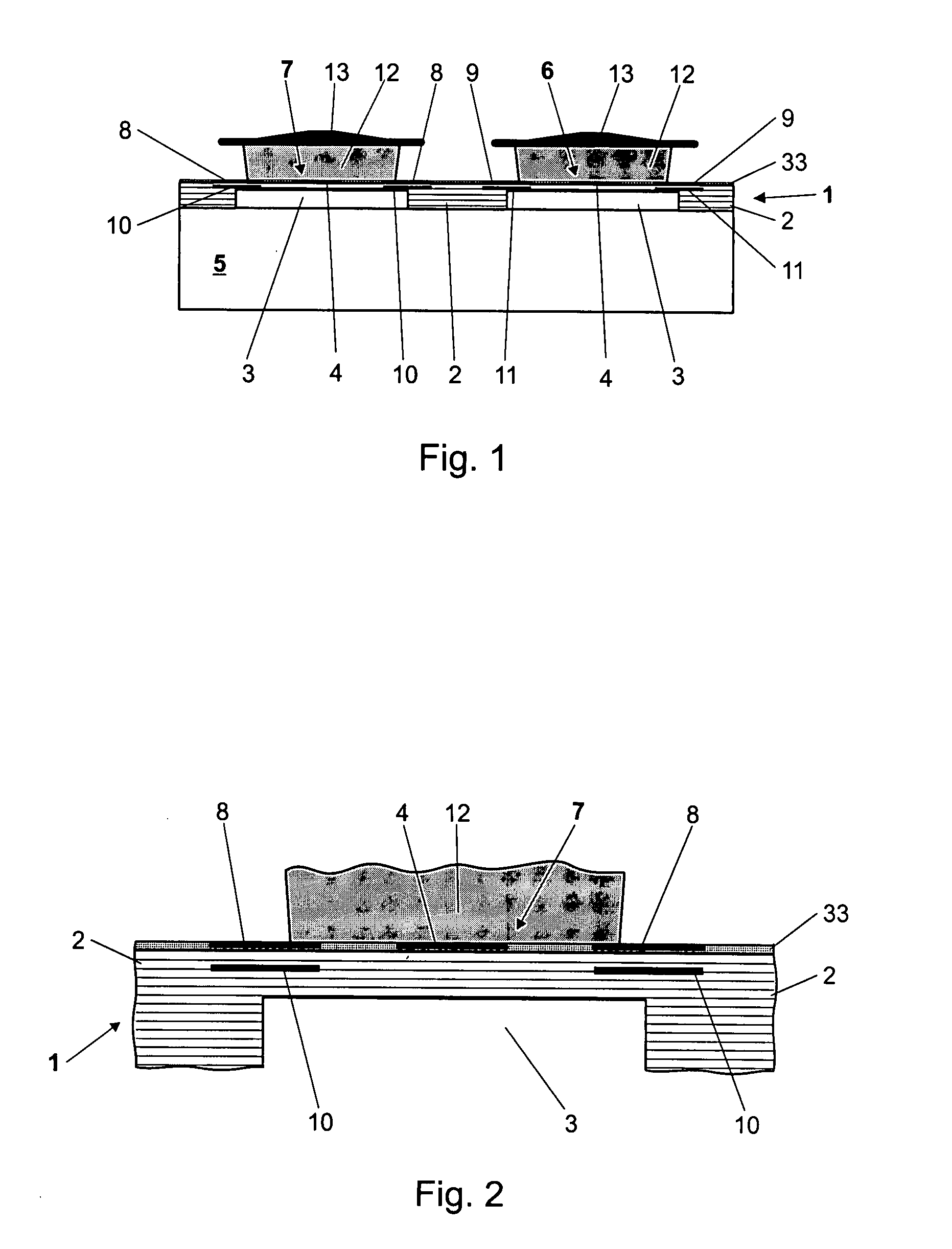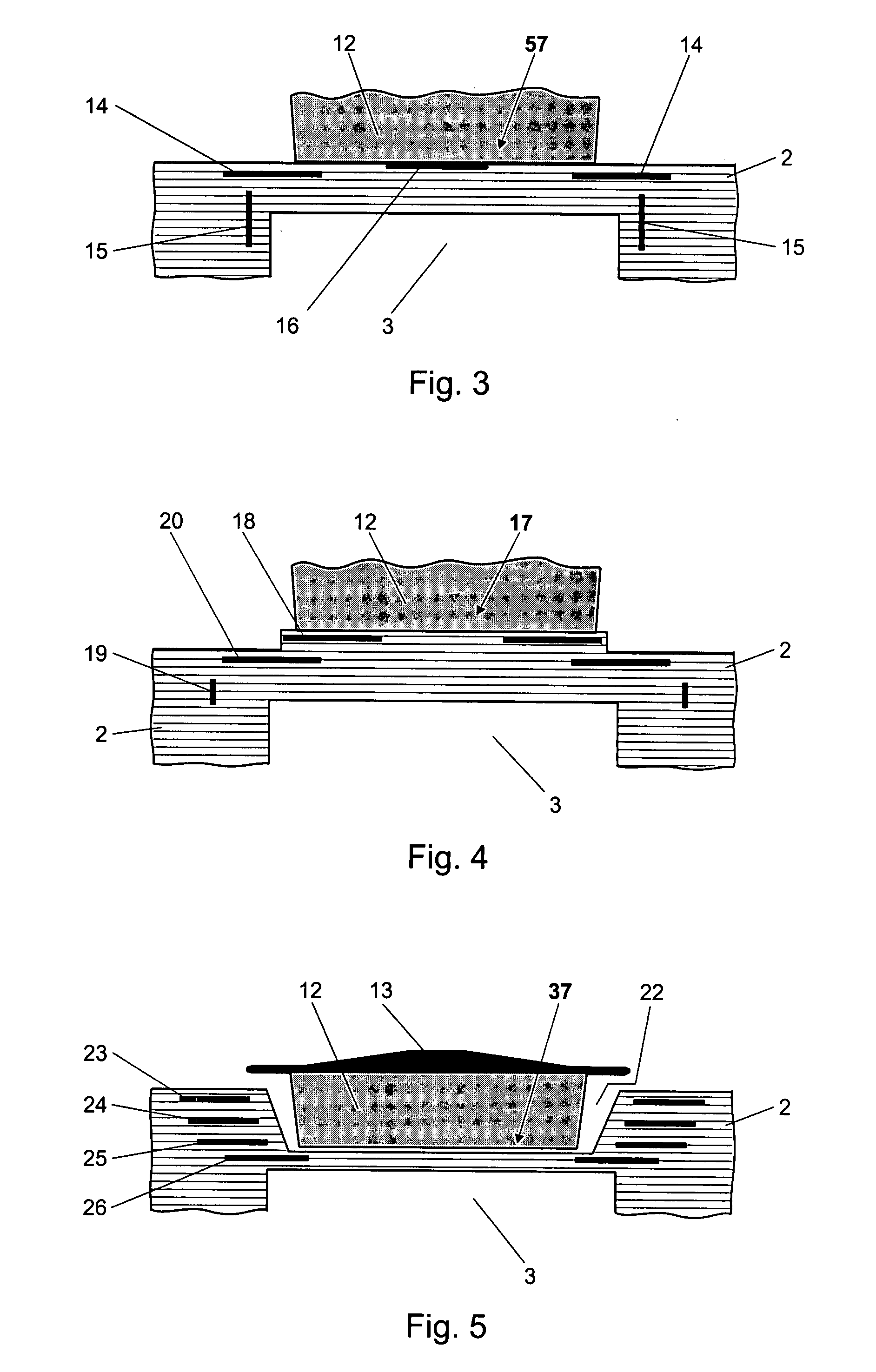Thermoanalytical sensor
a technology of analytic sensors and sensors, applied in the field of thermoanalytical sensors, can solve the problems of low mechanical and/or chemical endurance, high production process costs, and in many cases low sensitivity, and achieve the effect of greater structural flexibility and higher sensitivity
- Summary
- Abstract
- Description
- Claims
- Application Information
AI Technical Summary
Benefits of technology
Problems solved by technology
Method used
Image
Examples
Embodiment Construction
[0068]FIGS. 1 and 2 illustrate an examplary embodiment of a thermoanalytical sensor for calorimetric measuring devices. Shown in FIG. 1 are the substantially disk-shaped sensor 1 which is comprised of a plurality of layers 2 that have been solidly bonded to each other by going through a sintering process together, and at least one coating layer 33 that has been applied to the sensor 1 after the sintering, together with a temperature control device 5 and one cup 12 each for a sample and a reference. For better clarity, FIG. 2 shows an enlarged detail portion of FIG. 1. FIGS. 1 and 2 will be explained together in more detail in the following.
[0069] For a better understanding of the structure of the sensor, the individual layers are shown in all of the drawing figures, although the layers can no longer be fully differentiated from each other after the sintering, but form a nearly monolithic unit in which the individual functional elements are formed.
[0070] The sensor 1 consists of se...
PUM
| Property | Measurement | Unit |
|---|---|---|
| thickness | aaaaa | aaaaa |
| thickness | aaaaa | aaaaa |
| thickness | aaaaa | aaaaa |
Abstract
Description
Claims
Application Information
 Login to View More
Login to View More - R&D
- Intellectual Property
- Life Sciences
- Materials
- Tech Scout
- Unparalleled Data Quality
- Higher Quality Content
- 60% Fewer Hallucinations
Browse by: Latest US Patents, China's latest patents, Technical Efficacy Thesaurus, Application Domain, Technology Topic, Popular Technical Reports.
© 2025 PatSnap. All rights reserved.Legal|Privacy policy|Modern Slavery Act Transparency Statement|Sitemap|About US| Contact US: help@patsnap.com



